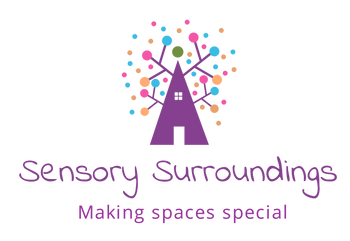
Sensory Surroundings is supported by its audiance. When you purchase through links on our site, we may earn an affiliate commission. Learn more
The approach of ‘learning by doing’ is deeply rooted in the essence of experiential learning, and transcends traditional lecture-based teaching methods. It invites young learners to explore, interact, and make sense of the world around them through direct experience.
Within diverse educational landscapes, embracing hands-on, sensory-rich activities will align with national educational standards and cater to the innate curiosity and boundless energy of young children.
This article will explore the transformative power of experiential learning in the early years, highlighting its multifaceted benefits for young minds. From bolstering cognitive skills to nurturing social connections, the hands-on approach to learning lays a robust foundation for lifelong curiosity and growth.
Through practical examples and expert insights, we'll explore how ‘learning by doing’ can be effectively implemented in both educational settings and at home, ensuring that every child has the opportunity to thrive in a stimulating and supportive learning environment.
Understanding 'Learning by Doing'
The concept of ‘learning by doing’ is far from a modern pedagogical trend. It's a time-honoured approach championed by some of the most influential theorists in educational psychology, including Jean Piaget and Lev Vygotsky, who recognised the profound impact of active engagement on cognitive development and learning.
This method, intrinsically linked to experiential learning, emphasises the role of experiences in the learning process, particularly those that involve active participation and reflection.
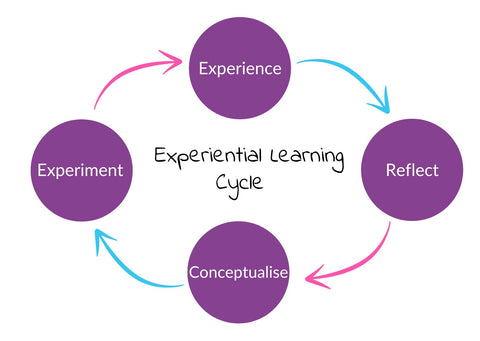
At its core, 'learning by doing' is an educational philosophy that posits the best way to understand a concept is to engage with it directly. This approach is not about rote memorisation or passive listening; instead, it encourages learners, especially young children, to explore, experiment, and engage with materials, ideas, and environments hands-on. It's a dynamic process where mistakes are seen as opportunities for learning, and curiosity is the driving force.
Jean Piaget, a Swiss psychologist renowned for his work on child development, argued that children learn best through doing and actively exploring. According to Piaget, as children interact with their environment, they construct knowledge by coordinating sensory experiences with physical, and motoric actions. This notion laid the groundwork for what we understand today as experiential learning in early childhood.
Lev Vygotsky, another pivotal figure in educational psychology, introduced the concept of the Zone of Proximal Development (ZPD), which further supports the 'learning by doing' approach. Vygotsky's theory suggests that children learn most effectively when they are engaged in activities that are just beyond their current abilities, with the support of a more knowledgeable other, such as a teacher or parent. This interaction not only fosters learning by doing but also emphasises the social context of learning, highlighting the importance of collaboration and communication.
By integrating this approach into the core of early childhood education, educators and parents can foster an environment where learning is not just received passively but experienced vividly and personally.
Benefits of Experiential Learning in Early Years
Experiential learning, or 'learning by doing,' plays a crucial role in the comprehensive development of young children. This educational approach, which emphasises active participation and reflection, offers a myriad of benefits across cognitive, social, emotional, and physical domains.
Cognitive Benefits:
- Enhances problem-solving and critical thinking skills by encouraging children to explore and find solutions through hands-on experiences.
- Promotes creativity and imagination as children engage with materials and scenarios in innovative ways.
Social and Emotional Benefits:
- Fosters collaboration and communication among peers, as experiential learning often involves group activities that require teamwork and negotiation.
- Builds self-esteem and resilience by providing opportunities for children to overcome challenges and succeed in tasks.
Physical Benefits:
- Supports fine and gross motor skill development through activities that require manipulation of materials and movement, such as building, climbing, and exploring natural environments.
Outdoor learning, a key aspect of experiential education, offers unique opportunities for children to connect with nature, enhance their physical well-being, and engage in creative play. It enables children to explore, go on adventures, and build confidence and self-esteem through activities like gardening, exploring natural elements, and physical play. This form of learning not only supports individual growth but also nurtures an understanding and appreciation of the environment.
In the context of the UK's Early Years Foundation Stage (EYFS), outdoor learning is highly valued for its flexibility and ability to adapt to each child's unique interests and needs. It enriches the curriculum by extending learning opportunities beyond the classroom, offering a dynamic and interactive backdrop for development.
Educators are encouraged to view the outdoors as an integral part of the learning environment, where children can engage in a wide range of activities that support their intellectual, physical, and emotional development.
Furthermore, experiential learning aligns with the UK's educational standards, emphasising the importance of play-based learning in early childhood education. This approach is grounded in the belief that children learn best through active engagement and reflection, making it an essential component of holistic educational practices.
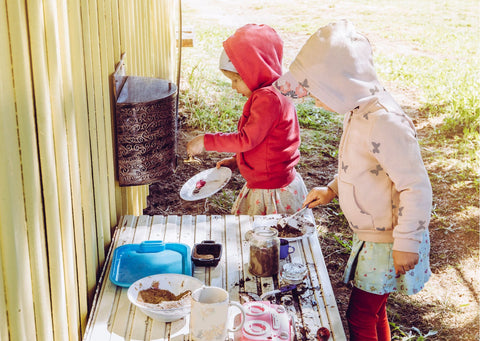
Practical Examples of Learning by Doing Activities
Incorporating sensory and hands-on activities into early childhood education provides numerous opportunities for young learners to explore and grow.
Here are some engaging hands-on activities that emphasise learning by doing:
Homemade Playdough
Creating playdough at home can be a fun and educational experience for children. They can learn about colours and shapes, and even practice their fine motor skills by kneading, rolling, and sculpting the dough. For an added sensory experience, consider adding different scents or textures to the playdough.
Sensory Bins with Various Themes
Sensory bins can be themed around different concepts like seasons, holidays, or natural elements. For instance, an autumn-themed sensory bin might include items like leaves, acorns, and small pumpkins, allowing children to explore different textures and colours. Adding tools like tweezers or scoops can also enhance fine motor skills.
Digging for Spaghetti Worms
A simple yet exciting activity where children dig through "dirt" made of spaghetti to find "worms." This not only is fun and messy, which children love, but it also helps with their tactile sensory processing and fine motor development as they use tools like tweezers to pick up the slippery spaghetti.
Water and Ice Play
Activities involving ice and water play can be both refreshing and educational. For example, creating ice boats with simple materials introduces children to concepts of buoyancy and melting, while also engaging their senses through the coolness of the ice and the movement of water.
Gloopy Gloop and Soapy Slime
Mixing cornstarch and water to create ‘gloop’ or using soap flakes to make slime can offer children a unique sensory experience. These materials behave in interesting ways, acting as both solids and liquids, which can fascinate children and stimulate their curiosity about science.
Each of these activities not only engages children in hands-on, sensory play but also serves as a foundation for learning across different domains, from cognitive and physical to emotional and social development. By integrating such activities into early years settings, educators can create a rich and stimulating learning environment that encourages children to explore, imagine, and learn through their senses.


Looking for a convenient way to enhance your child's playtime with educational and eco-friendly activities? Green Kid Crafts might be the perfect solution for you and your family. Created by an environmental scientist and mum, these monthly subscription boxes deliver hands-on STEAM projects right to your door, designed to spark creativity and a love of learning in kids ages 2 to 10+ years.
Each box comes with 4-6 screen-free activities tailored to different age groups—Discovery boxes for kids ages 5-10+ and Junior boxes for the little ones aged 3-5. Plus, they include a 12-page magazine with additional fun and learning.
Why not ease the hassle of finding engaging, educational activities and let the adventures come to you? With Green Kid Crafts, you're not just giving your child a box of projects; you're gifting them a journey of discovery and learning that's both sustainable and fun.
Join today, and save 10% on any new subscription.

Field Trips and Visits in Early Childhood Education
Field trips offer a dynamic way to enhance learning by doing in early childhood education, providing children with opportunities to explore new environments and apply what they learn in the classroom to the real world.
Here are some practical examples of field trips and visits that can significantly benefit young learners:
Visit to an Orchard or Farm
Trips to apple orchards, pumpkin patches, or farms allow children to learn about the origins of their food, understand agricultural processes, and explore the natural world. These experiences can be tied to lessons about plant life cycles, nutrition, and seasonal changes.
Exploration at Science Centers or Aquariums
Science centres provide interactive and engaging exhibits that cater to young minds' curiosity, making them ideal for lessons on various scientific topics. Aquarium visits offer a closer look at marine life, teaching children about aquatic ecosystems, the biology of sea creatures, and the importance of water conservation.
Outdoor Nature Walks or Reserve Visits
Engaging children in nature walks or visits to state parks can foster a deep appreciation for the environment while teaching them about local flora and fauna. Such activities encourage physical activity and observational skills as children explore and interact with their surroundings.
Experiencing Local Libraries or Theaters
Libraries can introduce children to the vast world of books and storytelling, sparking an interest in reading and literacy. Visits to local theatres can expose children to the performing arts, enriching their cultural understanding and creative expression.
Learning at the Beach or Water Parks
Beach visits can include lessons on marine life, ecosystems, and sandcastle construction, combining fun with educational content. Water parks offer a playful environment to discuss water physics, safety, and conservation, making learning enjoyable and memorable.
Fire Station and Safety Lessons
A classic field trip to a fire station can be both thrilling and educational, providing children with vital lessons in fire safety, emergency procedures, and the roles of firefighters in the community.
Supermarket or Local Market Visits
Exploring local markets or supermarkets can teach children about economics, healthy eating, and the source of the foods they consume. Such trips can also include lessons on money management, nutrition, and the importance of supporting local businesses.
Each of these field trip ideas offers a unique blend of fun and learning, helping children make connections between their experiences and the concepts they learn in the classroom. By carefully planning and preparing for these excursions, educators can ensure that children not only enjoy these experiences but also derive meaningful educational benefits from them.
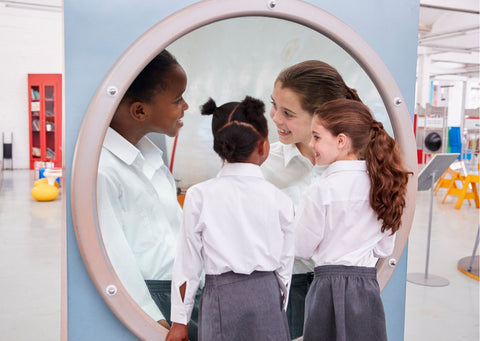
Implementing Learning by Doing at Home and School
Integrating experiential learning into both home and school environments can enrich a child's educational journey, making learning more engaging, meaningful, and fun. Here are some strategies and tips for parents and educators to effectively incorporate hands-on learning experiences:
For Parents
- Start with Simple Activities: Begin integrating experiential learning at home with simple, relatable activities such as cooking projects or nature walks. These activities can teach valuable lessons in science, math, and environmental awareness.
- Create a Home Office for Kids: Set up a pretend office space where children can engage in role-playing activities such as making calls, writing letters, and managing ‘important’ documents. This can help develop their communication, organisational, and creative thinking skills.
- Flashlight Fun at Bedtime: Use a flashlight in a darkened room to create a playful yet educational experience. This activity can enhance communication skills and provide a comforting transition to bedtime.
- Engage in Outdoor Activities: Outdoor play is crucial for developing both fine and gross motor skills. Activities like playing catch, going for a walk, or having a dance party can also boost emotional well-being.
For Educators
- Incorporate Project-Based Learning: Engage students in projects that relate to real-world problems, enhancing their ability to apply what they learn in the classroom to practical situations. This approach encourages active participation and critical thinking.
- Use Role Plays Based on Current Events: Role-playing activities, such as simulating a state legislature or a mock trial, can make abstract concepts more tangible and understandable, while also improving students' problem-solving and negotiation skills.
- Promote Reflection and Discussion: Encourage students to reflect on their experiences and articulate what they've learned. This can be facilitated through discussions, journals, or group presentations, helping to solidify their understanding and connect theory with practice.
- Adapt to Students' Reactions: Be prepared to adjust activities based on students' engagement and interests. This flexible approach allows educators to tailor learning experiences to the diverse needs of their students, making education more inclusive and effective.
By blending these strategies within home and school settings, children can benefit from a holistic educational experience that not only covers academic subjects but also fosters essential life skills such as creativity, empathy, and resilience.
Challenges and Considerations in Implementing Experiential Learning
Implementing experiential learning in early education, especially within the UK context, presents a set of challenges that educators and institutions must navigate to make learning by doing a practical and effective educational strategy.
Challenges
Resource Constraints
A significant hurdle in applying experiential learning is the lack of adequate resources and space, particularly in rural or under-resourced schools. The need for a real-world learning environment and rich experiential activities often clashes with the reality of limited resources available in schools, such as appropriate spaces for indoor and outdoor activities, laboratories, and basic equipment.
Traditional Assessment Methods
The conventional ‘paper-pencil test’ method of student assessment can be a barrier to the full integration of experiential learning. This traditional approach may not effectively capture the depth of understanding and skills developed through experiential activities, making it challenging for educators to evaluate learning outcomes accurately.
Curricular Limitations
The content of many subjects, especially theoretical ones, might not easily lend themselves to experiential learning strategies. Designing lesson plans that incorporate hands-on learning activities can be particularly challenging when the curriculum is heavily theoretical.
Lack of Teacher Training
The success of experiential learning heavily relies on the teacher's ability to facilitate rather than direct learning. However, many teachers may not be adequately trained or confident in employing innovative teaching practices, leaning towards traditional teaching methods instead.
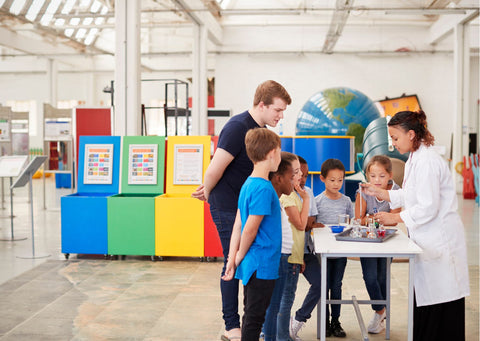
Solutions and Adaptations
To overcome these challenges, several strategies can be employed:
Leverage Local Communities and Environments
Educators can utilise local resources and environments as extensions of the classroom. This could include nature walks, local business visits, or community projects that do not require extensive resources but offer rich learning experiences.
Innovative Assessment Strategies
Moving beyond traditional assessments, educators can adopt portfolio assessments, project presentations, and reflective journals that better capture the range of skills and understanding developed through experiential learning.
Integrate Technology Thoughtfully
Digital tools and applications can supplement experiential learning by providing virtual simulations, interactive experiments, and platforms for collaborative projects, broadening the scope of experiential activities without substantial resource requirements.
Professional Development for Educators
Investing in teacher training and professional development can equip educators with the skills and confidence to implement experiential learning strategies effectively. This includes workshops, online courses, and peer learning opportunities focused on hands-on teaching methodologies.
Curriculum Flexibility
Encouraging flexibility within the curriculum to allow for the integration of experiential learning activities can make a significant difference. This could involve modular curricula that can be adapted to incorporate hands-on learning opportunities relevant to the student's environment and interests.
By acknowledging these challenges and considering adaptive strategies, educators and institutions can more effectively implement experiential learning, ensuring students benefit from engaging and meaningful education.
Conclusion
Throughout this article, we've explored the transformative power of experiential learning in early childhood education. By engaging children in hands-on activities and real-world experiences, we can foster holistic development across cognitive, social, emotional, and physical domains.
Now, we encourage you to bring these insights to life. Share your own experiences with experiential learning or try out some of the suggested activities with young learners in your life. Let's enrich the educational journey together by embracing the philosophy of learning by doing.
To stay updated with great ideas, activities and information for your children, subscribe to our newsletter and follow us on social media!
References
- Rani, Komal & Kumar, Tarun. (2023). Experiential Learning in School Education: Prospects and Challenges. 10. 178-183. 10.5281/zenodo.7652609.
- Piaget, J. (1952). The Origins of Intelligence in Children. International Universities Press.
- Vygotsky, L. (1978). Mind in Society: The Development of Higher Psychological Processes. Harvard University Press.
- Kolb, D. A. (1984). Experiential Learning: Experience as the Source of Learning and Development. Prentice-Hall.
